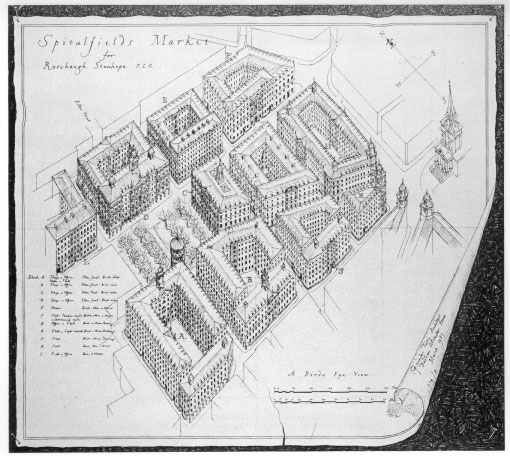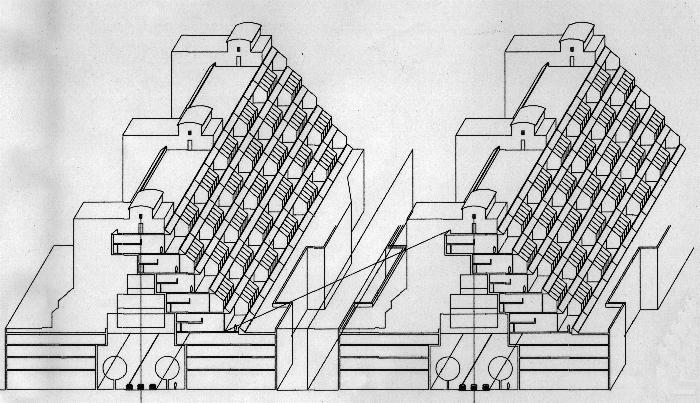|
The
American New Urbanism
movement, the
Krier brothers, Quinlan Terry and others in Europe, offered a return to
the human
scale, structure and diversity of the Traditional City,
the segregated and disintegrated present urban sprawl situation being
quite unsustainable.
They
followed most often the
precise, and sometimes quite seductive form of past
centuries.

Quinlan Terry's 1987 proposal for Spitalfields Market, London,
along XIXth century principles, does not let the
sun into the city
A return
to urban forms of the 19th century, as proposed by
"New Urbanism" and its european counterpart is a healthy reaction to
urban sprawl. It displays a rich architectural vocabulary and lots of
cultural and social relevance. However, it does not meet environmental
challenges since it does not take into account passive-solar design.
With 19th century's urban structure in square blocks, most dwellings
are denied access to winter sun, which requires therefore a specific
research on urban morphology.

Axonometric sketch with winter sun angle, by JL Msika
Requirement
of our times of massive urbanisation is not only to
reintroduce the diversity and human scale of the Traditional City, but
also to integrate fully the renewable energies, an endeavor which will
inevitably lead to new urban forms.
|

